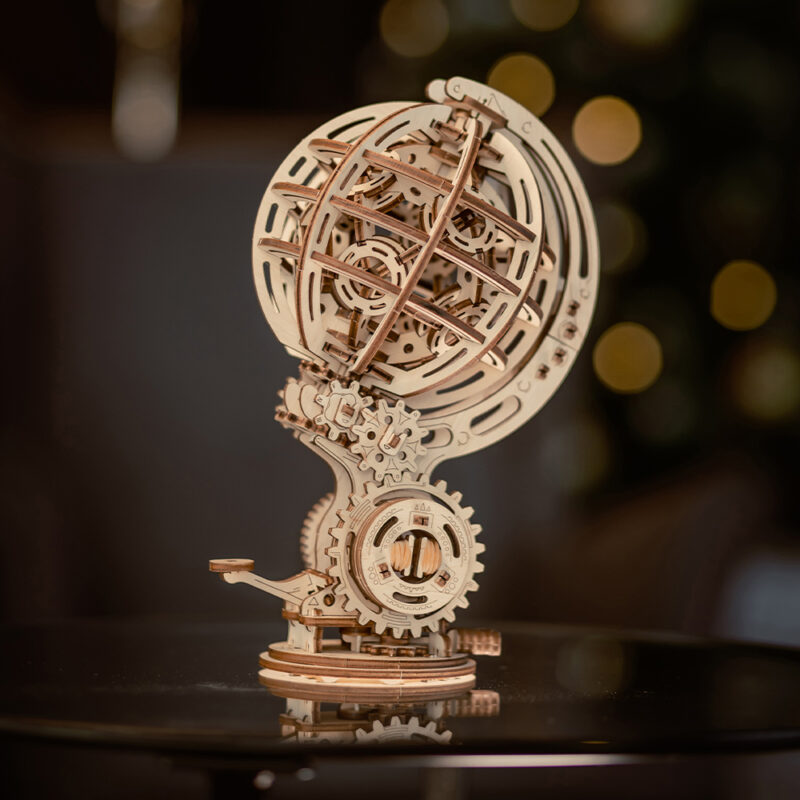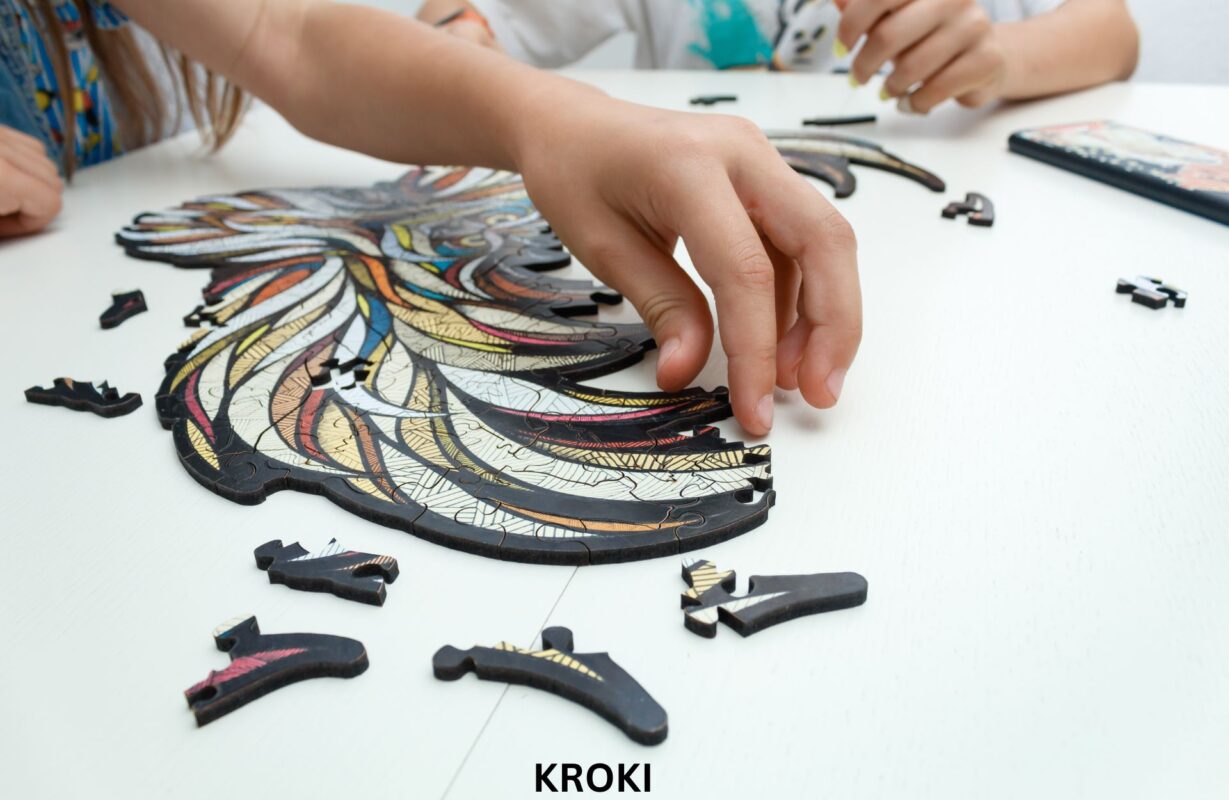GIFT IDEAS.
Jigsaw Puzzle
Jigsaw puzzles: what is a timeless pastime
Puzzles are a timeless, classic board game suitable for all ages. They consist of assembling together the various pieces of a cut picture to reassemble the original scene. It is an activity that trains the mind, develops cognitive and manual skills, and stimulates patience and perseverance.
I jigsaw have an ancient history. The earliest records of this type of puzzle date back to the ancient Roman Empire. But it was in 1760 that John Spilsbury, an English cartographer, invented the first modern puzzle, cutting out a geographical map and offering it as an educational game.
Since then, the popularity of puzzles has grown steadily. Today they are produced all over the world, with subjects and difficulty levels to suit all tastes. The spread of high-definition digital images has further increased the quality and realism of the scenes depicted.
Let's look in detail at what a jigsaw puzzle is, how it works, and why it appeals so much to young and old alike.
What is a puzzle: composition and operation
A puzzle consists of:
- An image, which may depict landscapes, artwork, photos or illustrations.
- A medium of cardboard, plastic or wood on which the image is printed.
- A cutting grid, which divides the image into many tiles of irregular shapes.
- The tiles themselves, which are cut out along the grid and randomly shuffled.
The objective of the game is to reassemble the original image by correctly assembling all the tiles. Each piece has a unique shape that allows it to fit together in one position.
The edges of the tiles match each other perfectly. The white space separating them reproduces the cutting grid when the puzzle is completed.
Assembling the puzzle is done by trial and error, trying different combinations until the pieces find their final place in the whole.
Types and levels of difficulty
The puzzles differ in:
- Subject: landscapes, artistic works, photographs, maps, etc.
- Number of pieces: from 12-24 pieces for young children, up to thousands for more complex puzzles.
- Shape of tiles: classic irregular shapes, or shaped pieces.
- Material: cardboard, wood, plastic, composite materials.
- Size: individual or large puzzles also 2 x 1.5 meters.
Based on these characteristics, puzzles are divided by difficulty level:
- Children's puzzle with large tiles and few details.
- 100-500 piece puzzles for kids and adults.
- 1000/1500-piece puzzles, medium-difficult.
- Puzzles of 2000-3000 pieces, for enthusiasts.
- Extremely complex puzzles from 5000 pieces and up.
The benefits of puzzles: educational and recreational activity
What are the benefits of puzzles? Let's look at them point by point.
Cognitive skill development Assembling a puzzle requires:
- Exercise logic to fit the pieces together.
- Develop memory, to remember the location of the tiles.
- Train mental visualization and rotation of objects in space.
- To stimulate the ability to analyze and synthesize.
- Improve dimensional assessment skills.
Increasing patience
Puzzles teach patience and perseverance to achieve a goal. Progress is slow, tile by tile. One must know how to wait calmly for each piece to find its place.
Improved concentration
Assembling a puzzle takes great visual concentration. One must focus on details, meticulously comparing the shapes of the tiles. This sharpens attentional skills.
Enhancement of problem solving
When faced with pieces to assemble, creative solution strategies must be devised. Puzzles are continuous problem solving, reinforcing the ability to find solutions.
Stimulation of motor skills
Object manipulation develops fine motor skills, such as precision in hand movements. Children refine hand-eye coordination.
Sense of gratification
Completing a puzzle, especially a difficult one, gives great satisfaction. Overcoming the challenge and seeing the completed picture repays effort and is a boost of self-esteem.
Relaxing recreational activity
Building a jigsaw puzzle relaxes the mind, drives away negative thoughts and relieves stress and anxiety. It is an anti-boring pastime that keeps you pleasantly engaged.
Socialization and collaboration
Puzzles can be a group activity. People chat, joke, and help each other. It is a great way to socialize and strengthen relationships with friends or family.
Artistic Enhancement
Puzzles often reproduce famous works of art. This brings young and old alike closer to the world of art, encouraging an appreciation of different pictorial currents.
Educational activity The subjects of the puzzles can have educational intent. Puzzles of geographic maps, artwork, animals, alphabets, numbers and so on are available for learning while having fun.
Puzzles for children and adolescents
Puzzles are a great educational and recreational tool for children and young people. Here's why they should be a part of childhood.
Motor skill development Manipulating tiles improves hand coordination and dexterity. Babies learn to make fine and accurate movements.
Learning logic Reasoning about the placement of pieces teaches logical and deductive thinking. Puzzles reinforce developing cognitive skills.
Improved self-esteem Successfully completing a puzzle, especially a challenging one, gives a great boost in self-esteem and sense of competence.
Fun and creativity Puzzles stimulate the imagination and fantasy of young children, and are a fun way to spend free time.
Sociality Building a puzzle together promotes interaction with peers, teamwork and communication.
Learning colors and shapes Puzzles help children become familiar with colors and recognize basic geometric shapes.
Concentration Grouping the pieces requires prolonged concentration. Puzzles exercise the attention of young children.
Hand-eye coordination Studying how to fit the tiles together and then performing the movements greatly improves coordination.
Patience and perseverance Overcoming the difficulties of a puzzle teaches one not to be discouraged at the first few beats and to persevere.
Problem solving Reasoning about how to put the pieces together is a great exercise in problem solving and strategic thinking.
Comparison with reality Realistic subjects help children relate images to the real contexts they represent.
Indirect learning Thematic puzzles can teach school notions in a fun way: numbers, letters, geography, animals.
Visual-spatial skills development Interpreting the two dimensions of tiles and assembling them in three dimensions sharpens spatial skills.
Main benefits of the activity on children
In summary, here are the main benefits of puzzles on children:
- Improves motor skills, precision and hand-eye coordination.
- It stimulates logic, deductive reasoning and problem solving.
- It increases concentration and focus.
- Develops visuospatial skills in the 2D-3D transition.
- It teaches patience and perseverance toward a goal.
- It increases self-esteem and a sense of competence.
- It allows learning notions in a playful and indirect way.
- Promotes socialization, sharing and group play.
- It acquaints people with colors, shapes, animals, landscapes, etc.
- It offers healthy creative and anti-boring fun.
- It relaxes and distracts from negative thoughts.
In conclusion, jigsaw puzzles are a terrific educational pastime for children, with lifelong benefits. They should be part of every child's childhood to raise curious, creative and proactive minds.



